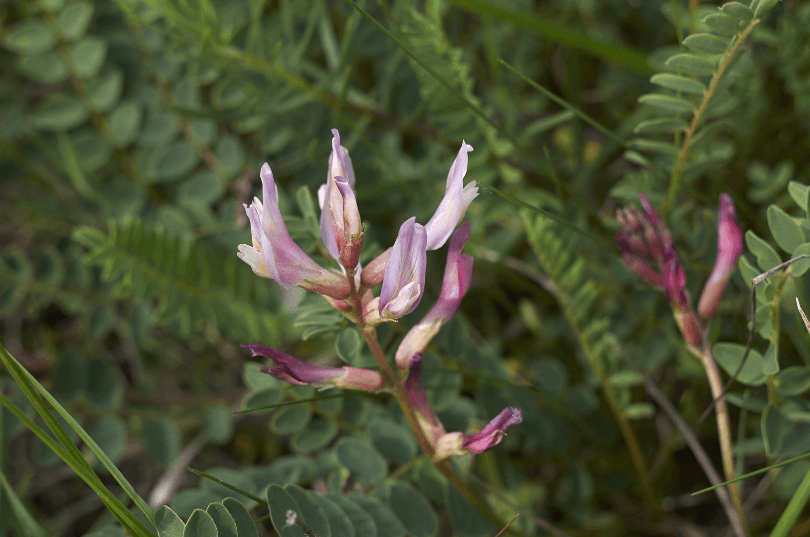
Astragalus
Share

Common Name Astragale,Beg kei,Milk vetch
Family Name Fabaceae
Parts Used Roots
Herbal Actions Diuretic,carminative,cardioprotective
Health Benefits Blood sugar,Immunity,nutritive
What are the Benefits of Astragalus?
Astragalus is renowned for its immune-supportive properties. It is believed to modulate the immune system, enhancing the body's natural defense mechanisms. This makes it a popular choice for immune support protocols, particularly during cold and flu season.
The herb's benefits extend to cardiovascular health. It has been used as a complementary therapy for heart disease, with some research suggesting it may help manage heart failure. Astragalus is also believed to have antihypertensive effects, potentially benefiting those with high blood pressure.
Astragalus contains compounds with anti-inflammatory and antioxidant effects. These properties may help combat oxidative stress and inflammation, which are implicated in many chronic diseases. The herb's flavonoids and saponins are particularly noted for these effects.
Some studies indicate potential anti-cancer properties of Astragalus. It has been used to reduce side effects of chemotherapy in cancer patients. However, more research is needed to fully understand its role in cancer treatment.
The herb may improve kidney function in patients with chronic kidney disease. It has been traditionally used to promote urination and reduce edema, which can be beneficial for kidney health. Astragalus is also believed to have hepatoprotective effects, potentially supporting liver health.
Astragalus may have potential benefits in managing diabetes and related complications. Some research suggests it can help control blood sugar levels, making it a potential adjunct therapy for diabetes management.
The herb may have a role in wound healing and skin health. It is sometimes used to minimize scarring and support overall skin health. This is likely due to its anti-inflammatory and antioxidant properties.
Astragalus is known for its adaptogenic properties. As an adaptogen, it helps the body resist various stresses, both physical and mental. This makes it a valuable herb for managing stress and promoting overall well-being.
Finally, Astragalus is traditionally used to enhance energy and stamina. This, combined with its adaptogenic properties, makes it a popular choice for those seeking to boost their vitality and endurance.
In conclusion, Astragalus offers a wide range of potential health benefits. From immune support to stress resistance, it is a versatile herb with a long history of use in herbal medicine.
Historical Use of Astragalus
Astragalus has a rich history in traditional Chinese medicine, where it is known as Huang Qi, meaning "yellow leader". This name reflects the plant's yellow root and its high status in herbal remedies. It has been used for centuries to support immune function, enhance energy, and promote longevity.
The herb's historical significance extends beyond its medicinal uses. Astragalus is part of the "Four Noble Ones" in Chinese art, symbolizing the seasons. It has also been featured in various cultural and historical texts, emphasizing its importance in herbal lore.
Traditional preparation methods often involve simmering the root to make a decoction. This process extracts the beneficial compounds from the root, resulting in a potent medicinal brew. The herb is also used in combination with other herbs in traditional Chinese medicine formulations.
The Doctrine of Signatures, a historical belief that a plant's physical characteristics indicate its healing properties, has implications for Astragalus. The plant's fibrous root, which can grow up to a meter in length, was thought to signify its ability to deeply nourish the body.
In conclusion, the historical use of Astragalus is deeply intertwined with traditional Chinese medicine and culture. Its long-standing use and cultural significance underscore its importance in herbal medicine.
Botanical Description & Habitat
Astragalus belongs to the legume family Fabaceae, a large and diverse group of flowering plants. This genus is vast, encompassing over 3,000 species of herbs and small shrubs. However, not all species are used medicinally.
The primary species used in herbal medicine are Astragalus membranaceus and Astragalus mongholicus. These species are native to the temperate regions of the Northern Hemisphere, particularly Asia. They are hardy plants, growing well in sandy, well-drained soils and preferring full sun.
The Astragalus plant has a unique physical appearance. Its flowers, typically yellow, can sometimes exhibit purple or white hues depending on the species. The plant's fibrous root, which can grow up to a meter in length, is the part most commonly used for medicinal purposes.
The seeds of Astragalus require scarification to germinate effectively. This means the seed coat needs to be physically broken or worn down to allow water to penetrate and initiate germination. The plant has a slow growth rate and can take up to four years to mature.
